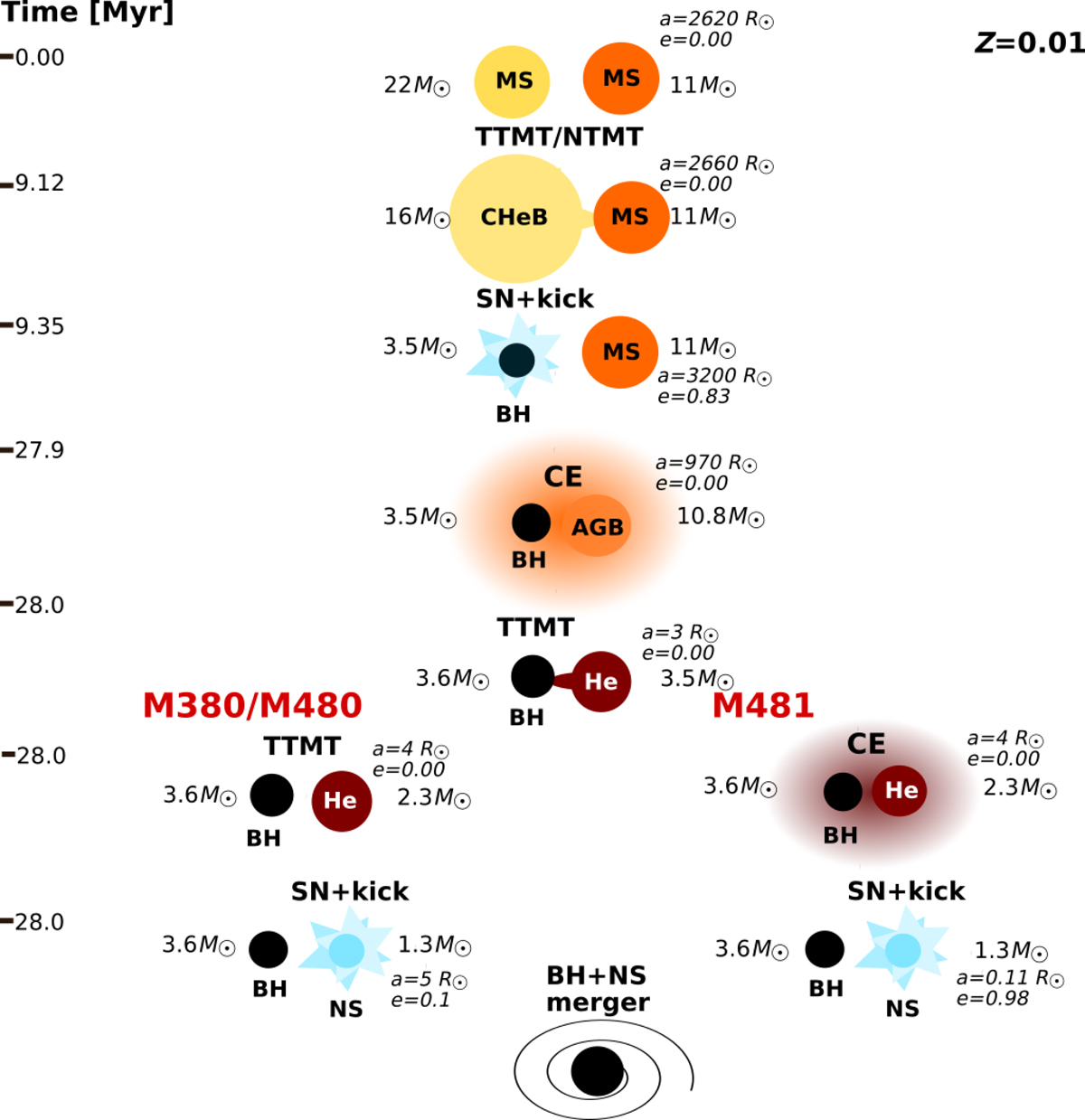Fig. 11.

Typical local (z ≈ 0) BH-NS mergers formation scenarios for three tested models M380, M480, and M481 (for models M380 and M480 the scenario is the same). For all models, we begin with the same initial conditions: a wide binary system with 22 M⊙ primary and 11 M⊙ secondary on the orbit of ∼2600 R⊙ with metallicity Z = 0.01. Most of the evolutionary phases are common for all three models. When the primary leaves main sequence it expands, first as an HG star and then as core helium burning giant. The system goes through stable RLOF phase with TTMT and nuclear-timescale MT episodes. After MT the donor looses its envelope and soon explodes as SN. A low-mass BH (3.5 M⊙) is formed with the accompanying high natal kick which causes the system eccentricity increase to e = 0.83. Next, the secondary leaves main sequence and begins to expands. At the same time the orbit gets circularized by the tides. System goes thorough the CE phase, the secondary looses its envelope. After CE separation decreases to only 3 R⊙. Close system of BH and helium star is formed. As after CE the secondary is a main sequence or HG naked helium star, it expands initiating a stable RLOF. The system goes through another TTMT, which in model M481 ends with the second CE phase and formation of a very close (0.11 R⊙) BH-NS system. In the case of models M380 and M480, once TTMT ends, the system remains a close BH-He star binary and soon the secondary explodes forming a NS.
Current usage metrics show cumulative count of Article Views (full-text article views including HTML views, PDF and ePub downloads, according to the available data) and Abstracts Views on Vision4Press platform.
Data correspond to usage on the plateform after 2015. The current usage metrics is available 48-96 hours after online publication and is updated daily on week days.
Initial download of the metrics may take a while.


